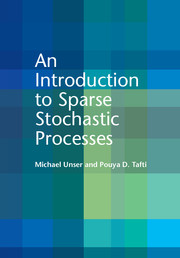Refine listing
Actions for selected content:
1437 results in Ebooks in machine learning
Acknowledgments for First Edition
-
- Book:
- Counterfactuals and Causal Inference
- Published online:
- 05 December 2014
- Print publication:
- 17 November 2014, pp xxi-xxii
-
- Chapter
- Export citation
I - Introduction
-
- Book:
- Counterfactuals and Causal Inference
- Published online:
- 05 December 2014
- Print publication:
- 17 November 2014, pp 3-34
-
- Chapter
- Export citation
II - Counterfactuals, Potential Outcomes, and Causal Graphs
-
- Book:
- Counterfactuals and Causal Inference
- Published online:
- 05 December 2014
- Print publication:
- 17 November 2014, pp 35-36
-
- Chapter
- Export citation
2 - Counterfactuals and the Potential Outcome Model
-
- Book:
- Counterfactuals and Causal Inference
- Published online:
- 05 December 2014
- Print publication:
- 17 November 2014, pp 37-76
-
- Chapter
- Export citation
7 - Weighted Regression Estimators of Causal Effects
-
- Book:
- Counterfactuals and Causal Inference
- Published online:
- 05 December 2014
- Print publication:
- 17 November 2014, pp 226-264
-
- Chapter
- Export citation
13 - Counterfactuals and the Future of Empirical Research in Observational Social Science
-
- Book:
- Counterfactuals and Causal Inference
- Published online:
- 05 December 2014
- Print publication:
- 17 November 2014, pp 437-450
-
- Chapter
- Export citation
10 - Mechanisms and Causal Explanation
-
- Book:
- Counterfactuals and Causal Inference
- Published online:
- 05 December 2014
- Print publication:
- 17 November 2014, pp 325-353
-
- Chapter
- Export citation
12 - Distributional Assumptions, Set Identification, and Sensitivity Analysis
-
- Book:
- Counterfactuals and Causal Inference
- Published online:
- 05 December 2014
- Print publication:
- 17 November 2014, pp 419-434
-
- Chapter
- Export citation
8 - Self-Selection, Heterogeneity, and Causal Graphs
-
- Book:
- Counterfactuals and Causal Inference
- Published online:
- 05 December 2014
- Print publication:
- 17 November 2014, pp 267-290
-
- Chapter
- Export citation
I - Causality and Empirical Research in the Social Sciences
-
- Book:
- Counterfactuals and Causal Inference
- Published online:
- 05 December 2014
- Print publication:
- 17 November 2014, pp 1-2
-
- Chapter
- Export citation
11 - Repeated Observations and the Estimation of Causal Effects
-
- Book:
- Counterfactuals and Causal Inference
- Published online:
- 05 December 2014
- Print publication:
- 17 November 2014, pp 354-416
-
- Chapter
- Export citation
5 - Matching Estimators of Causal Effects
-
- Book:
- Counterfactuals and Causal Inference
- Published online:
- 05 December 2014
- Print publication:
- 17 November 2014, pp 140-187
-
- Chapter
- Export citation

An Introduction to Sparse Stochastic Processes
-
- Published online:
- 05 September 2014
- Print publication:
- 21 August 2014
4 - Continuous-domain innovation models
-
- Book:
- An Introduction to Sparse Stochastic Processes
- Published online:
- 05 September 2014
- Print publication:
- 21 August 2014, pp 57-88
-
- Chapter
- Export citation
8 - Sparse representations
-
- Book:
- An Introduction to Sparse Stochastic Processes
- Published online:
- 05 September 2014
- Print publication:
- 21 August 2014, pp 191-222
-
- Chapter
- Export citation
Appendix B - Positive definiteness
-
- Book:
- An Introduction to Sparse Stochastic Processes
- Published online:
- 05 September 2014
- Print publication:
- 21 August 2014, pp 336-343
-
- Chapter
- Export citation
1 - Introduction
-
- Book:
- An Introduction to Sparse Stochastic Processes
- Published online:
- 05 September 2014
- Print publication:
- 21 August 2014, pp 1-18
-
- Chapter
- Export citation
Frontmatter
-
- Book:
- An Introduction to Sparse Stochastic Processes
- Published online:
- 05 September 2014
- Print publication:
- 21 August 2014, pp i-iv
-
- Chapter
- Export citation
Contents
-
- Book:
- An Introduction to Sparse Stochastic Processes
- Published online:
- 05 September 2014
- Print publication:
- 21 August 2014, pp vii-xii
-
- Chapter
- Export citation
References
-
- Book:
- An Introduction to Sparse Stochastic Processes
- Published online:
- 05 September 2014
- Print publication:
- 21 August 2014, pp 347-362
-
- Chapter
- Export citation
